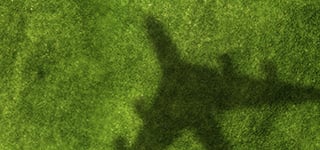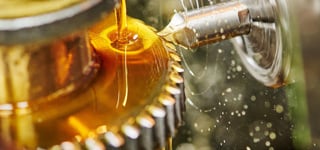/test-tubes_iStock_STEEX_174768007_2500x500px_200917.jpg?width=300&name=test-tubes_iStock_STEEX_174768007_2500x500px_200917.jpg)
Solvents for the paint, coating and adhesive industry
Market requirements for the paint, coating and adhesive industry
Solvents play an important role in industrial production. They are mainly used in the paint and coating, printing ink and adhesive industries. The demands are clearly defined.
High quality solvents must above all
- be free from harmful aromatic compounds
- show a consistent purity and
- do not contain unsaturated compounds.
As a long-standing partner, Haltermann Carless meets the requirements of its’ customers in the paint, coating and adhesives industry and convinces as a qualified manufacturer with high-quality solvents for the various application needs.
Advantages of our solvents for the
paint, coating and adhesive industry:
- Free from aromatics
- No unsaturated compounds
- Purity of 95 % and 99 %
- Consistent quality
- Extensive monitoring of the production process
- Certification: ISO 9001, ISO 14001 and ISO/IEC 17025 (Hamburg laboratory)
- "Made in Germany" - manufactured in Germany
- Worldwide distribution
- Alternative to Tuluol and Xylene →
You can find more product information in our media library:

Market studies expect annual global growth averaging 4 % up to 2025 for the paint and coating market.
Application areas of our solvents
Tailor-made solutions, consistent quality and comprehensive services make Haltermann Carless a leading supplier and our high-value hydrocarbons a versatile product.
Our solvents are widely used in a variety of key applications in the following areas
Paints & Lacquers
The paints and coatings sector is a traditional application area for Haltermann Carless’ hydrocarbons. More than half of all solvents produced are processed by this industry. In the past, mainly aromatic compounds such as toluene or xylenes were used for this purpose due to their high solvency power. More recently the use of these molecules is declining, as they are increasingly viewed as problematic in terms of environmental impact and health aspects.
In paints, paraffins such as n-heptane, n-octane and iso-octane are rarely used as pure components because their solvency power is significantly lower than that of aromatic compounds. However, they are indispensable for many specific applications. The iso-octane is often used as an aromatic-free substitute in thinners for paints and coatings or as a medium for cleaning brushes and tools. When used in a paint, the moderately rapid evaporation ensures an even result.

Acrylic paints
Acrylic paints such as classic wall paints are based on a dispersion of plastic polymers in water. The base of the paint must have both water-friendly and water-repellent properties in order to be able to incorporate all components of the formulation. To achieve this, the polymer is first prepared in a water/iso-octane emulsion of acrylic esters. The paraffin is removed and then the polymer is further built up with water-soluble components. This gives it both desired properties in one molecule. Pure paraffins ensure a precisely controllable reaction here.
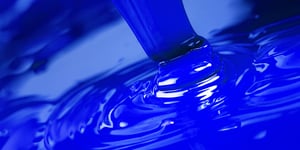
Adhesives
Another very important application is adhesives. Paraffinic solvents such as n-heptane are used as solvents for adhesives to avoid swelling or dissolving the materials to be bonded. Foamed polystyrene, elastomers and many other plastics are dissolved by common adhesive formulations and cannot be bonded. Formulations that use paraffins instead of esters or aromatics have an advantage in this respect.
In the production of adhesive films, resealable packaging and labels, n-octane or iso-octane are used in particular. This application is similar to the adhesives used for bonding plastics. The octane does not penetrate into the carrier material of the adhesive film, meaning that the film remains clear and does not deform. Naphtha cuts with a wide boiling range are often used instead of pure paraffins. Although naphtha is cheaper, the properties of the adhesive or adhesive film are less controllable. Higher precession results can be achieved with the use of n-heptane which has a narrow, well-defined boiling range.
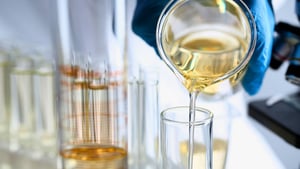
Greases, silicones and other lubricants and coolants
To apply highly viscous silicone greases or oils to surfaces, they are diluted with an inert, volatile paraffin. This creates a thin, uniform film of the lubricant. This is necessary to avoid an excess of lubricant and the resulting costs. Some seals and plastic components are partially softened in paraffinic solvents before final assembly to give them the appropriate shape. The paraffin acts as a plasticiser that penetrates into the structure of the plastic without dissolving or destroying it. This allows pipes to be simply pushed into one another. If the solvent evaporates, the parts shrink back into shape and bond permanently.

Cleaning and degreasing agents
Cold cleaners for degreasing workpieces, tools or brake pads consist to a very large extent of paraffins. They do not attack surfaces, painted areas and plastics, yet reliably remove residues of lubricants and preservative agents.

Paints & Lacquers
The paints and coatings sector is a traditional application area for Haltermann Carless’ hydrocarbons. More than half of all solvents produced are processed by this industry. In the past, mainly aromatic compounds such as toluene or xylenes were used for this purpose due to their high solvency power. More recently the use of these molecules is declining, as they are increasingly viewed as problematic in terms of environmental impact and health aspects.
In paints, paraffins such as n-heptane, n-octane and iso-octane are rarely used as pure components because their solvency power is significantly lower than that of aromatic compounds. However, they are indispensable for many specific applications. The iso-octane is often used as an aromatic-free substitute in thinners for paints and coatings or as a medium for cleaning brushes and tools. When used in a paint, the moderately rapid evaporation ensures an even result.

Acrylic paints
Acrylic paints such as classic wall paints are based on a dispersion of plastic polymers in water. The base of the paint must have both water-friendly and water-repellent properties in order to be able to incorporate all components of the formulation. To achieve this, the polymer is first prepared in a water/iso-octane emulsion of acrylic esters. The paraffin is removed and then the polymer is further built up with water-soluble components. This gives it both desired properties in one molecule. Pure paraffins ensure a precisely controllable reaction here.

Adhesives
Another very important application is adhesives. Paraffinic solvents such as n-heptane are used as solvents for adhesives to avoid swelling or dissolving the materials to be bonded. Foamed polystyrene, elastomers and many other plastics are dissolved by common adhesive formulations and cannot be bonded. Formulations that use paraffins instead of esters or aromatics have an advantage in this respect.
In the production of adhesive films, resealable packaging and labels, n-octane or iso-octane are used in particular. This application is similar to the adhesives used for bonding plastics. The octane does not penetrate into the carrier material of the adhesive film, meaning that the film remains clear and does not deform. Naphtha cuts with a wide boiling range are often used instead of pure paraffins. Although naphtha is cheaper, the properties of the adhesive or adhesive film are less controllable. Higher precession results can be achieved with the use of n-heptane which has a narrow, well-defined boiling range.

Greases, silicones and other lubricants and coolants
To apply highly viscous silicone greases or oils to surfaces, they are diluted with an inert, volatile paraffin. This creates a thin, uniform film of the lubricant. This is necessary to avoid an excess of lubricant and the resulting costs. Some seals and plastic components are partially softened in paraffinic solvents before final assembly to give them the appropriate shape. The paraffin acts as a plasticiser that penetrates into the structure of the plastic without dissolving or destroying it. This allows pipes to be simply pushed into one another. If the solvent evaporates, the parts shrink back into shape and bond permanently.

Cleaning and degreasing agents
Cold cleaners for degreasing workpieces, tools or brake pads consist to a very large extent of paraffins. They do not attack surfaces, painted areas and plastics, yet reliably remove residues of lubricants and preservative agents.

Would you like to learn more
about our solvents for the paint,
coating and adhesive industry?
We are happy to advise you!
Would you like to learn more about our solvents for the paint, coating and adhesive industry?
We are happy to advise you!
Haltermann Carless solvents
at a glance
Our paraffinic solvents for the paint, coating and adhesives industry have outstanding properties offering 95% and 99% purity.
Hydrocarbons 95%
|
Hydrocarbons 95% |
CAS-No. |
Colour |
Density |
Destillation Rate |
Evaporation Rate |
Refractive Index |
Anilin Point |
Aromatic content |
Non-Volatile Matter |
Flash Point |
Vapor Pressure |
Kinetic Viscosity |
|---|---|---|---|---|---|---|---|---|---|---|---|---|
|
Typical Properties |
ISO 6271 |
@ 15°C kg/m3 ISO 12185 |
°C @ 101.3 kPa ASTM D 1078 |
(Ether = 1) DIN 53170 |
ⁿD²⁰ DIN 51423-2 |
°C ISO 2977 |
% m/m GC/UV-Spectroscopy |
mg/100ml DIN 53172/ASTM D 1353 |
°C ISO 2719/ISO 13736 |
kPa @ 20°C (1 kPa = 10mbar) |
mm²/s (cSt) @ 20°C ISO 3104 |
|
|
n-Heptane |
142-82-5 |
< 5 |
688 |
97-100 |
3.1 |
1.388 |
70 |
< 0.02 |
< 2 |
< -4 |
3.9 |
0.58 |
|
iso-Octane (2,2,4-Trimethylpentane) |
540-84-1 |
< 5 |
696 |
98-101 |
2.9 |
1.392 |
79 |
< 0.01 |
< 2 |
-10 |
3.7 |
0.68 |
|
n-Octane |
111-65-9 |
< 5 |
708 |
124-127 |
8.0 |
1.398 |
73 |
< 0.01 |
< 5 |
+12 |
1.3 |
0.74 |
|
iso-Pentane |
78-78-4 |
< 5 |
624 |
27-29 |
< 1.0 |
1.354 |
- |
< 0.001 |
< 2 |
< -20 |
56.9 |
0.35 |
|
n-Pentane |
109-66-0 |
< 5 |
631 |
36-38 |
1.0 |
1.358 |
69 |
< 0.01 |
< 2 |
< -20 |
40.9 |
0.39 |
|
n-Hexane |
110-54-3 |
< 5 |
665 |
68-70 |
1.5 |
1.375 |
68 |
< 0.01 |
< 2 |
< -20 |
12.5 |
0.47 |
|
n-Octane |
111-65-9 |
< 5 |
708 |
124-127 |
8.0 |
1.398 |
73 |
< 0.01 |
< 5 |
+12 |
1.3 |
0.74 |
|
n-Nonane |
111-84-2 |
< 5 |
723 |
150-154 |
24.0 |
1.405 |
74 |
< 0.03 |
< 5 |
-30 |
0.38 |
0.96 |
|
n-Decane |
124-18-5 |
< 10 |
733 |
172-177 |
67.0 |
1.412 |
77 |
< 0.01 |
< 5 |
+45 |
0.16 |
1.12 |
Hydrocarbons 99%
| Hydrocarbons 99% | CAS-No. | Molecular Weight | Density | Boiling Point | Solidification Point | Refractive Index | Flash Point |
Specific Heat |
Heat of Vaporization | Vapour Pressure 25°C | Surface Tension | Kinemtic Viscosity |
|---|---|---|---|---|---|---|---|---|---|---|---|---|
|
Typical Properties |
|
at 20°C kg/m3 ISO 12185
|
at 101.3 kPa (1013 mbar) °C
|
°C |
ⁿD²⁰ DIN 51423-2
|
°C ISO 2719/ISO 13736 |
cp kJ/kg.K at 20°C (1kj = 0.239 kcal) |
ΔH kJ/kg (1 kJ = 0.239 kcal) |
kPa @ 25 °C (1kPa = 10mbar) |
@ 20°C mN/m (dyn/cm) |
mm²/s (cSt) @ 20°C ISO 3104 |
|
| n-Heptane | 142-82-5 | 100.2 | 684 | 98.4 | -90.6 | 1.3875 | -1 | 2.208 | 316.5 | 6.26 | 19.3 | 0.61 |
|
iso-Octane
(2,2,4-Trimethylpentane)
|
540-84-1 | 114.2 | 692 | 99.3 | -71.8 | 1.3915 | -12 | 2.074 | 271.6 | 6.04 | 18.8 | 0.70 |
| n-Octane | 111-65-9 | 114.2 | 705 | 125.7 | -56.8 | 1.3975 | +12 | 2.196 | 301.1 | 2.00 | 21.8 | 0.78 |
| iso-Pentane | 78-78-4 | 72.1 | 620 | 27.8 | -160.0 | 1.3540 | < -35 | 2.258 | 339.0 | 91.74 | 15.0 | 0.36 |
| n-Pentane | 109-66-0 | 72.1 | 626 | 36.0 | -131.0 | 1.3575 | < -35 | 2.372 | 357.5 | 68.39 | 16.0 | 0.38 |
| n-Hexane | 110-54-3 | 86.2 | 660 | 68.7 | -95.3 | 1.3750 | -23 | 2.263 | 335.1 | 20.24 | 18.4 | 0.47 |
| n-Nonane | 111-84-2 | 128.3 | 718 | 150.8 | -53.5 | 1.4054 | +31 | 2.108 | 286.5 | 0.66 | 22.9 | 1.00 |
| n-Decane | 124-18-5 | 142.3 | 730 | 174.1 | -29.7 | 1.4120 | 49 | 2.103 | 276.3 | 0.23 | 23.9 | 1.27 |
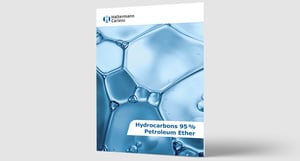

Own laboratories
ensure our high quality promise
Offering a high quality and comprehensive services to our customers has been our driving force for generations. At our ISO 9001 certified production sites we have modern equipped laboratories with extensive measuring and analysis equipment. Our own laboratories ensure our high standards and allow for tailor-made tests for customers. The additional ISO/IEC 17025 (DAkks) accreditation of our German laboratory is a good example of the high quality standards, which is highly appreciated by our customers worldwide.
Analysis and tests facilitate high quality assurance
Both our qualified lab employees and comprehensive equipment ensure exact analyses, testing and acceptance of all products when they leave our facility. Our equipment allows for a wide range of testings, for example:
- Flash point
- Density
- pH-value
- Melting Point, Cloud Point and Pour Point
- Conductivity
- IR- and UV-spectroscopy
- Photometry
- Gas Chromatography
- Ion Chromatography
- Karl Fischer Method for Water Determination
- Potentiometric Titrations
- Viscosity
- Sulphur Determination
- HPLC Measurements
- Colour
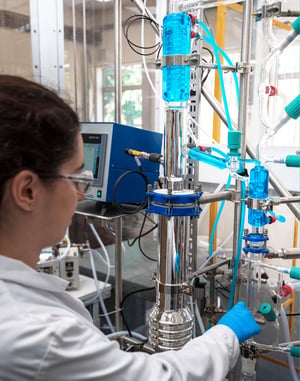
Benefit from our
comprehensive service:
We implement our traditional values such as customer focus, individuality and future orientation in all of our business areas. Customer and supplier proximity is particularly important to us. Together we can develop the best possible solutions for all requirements in the paint, coating and adhesive industry.


